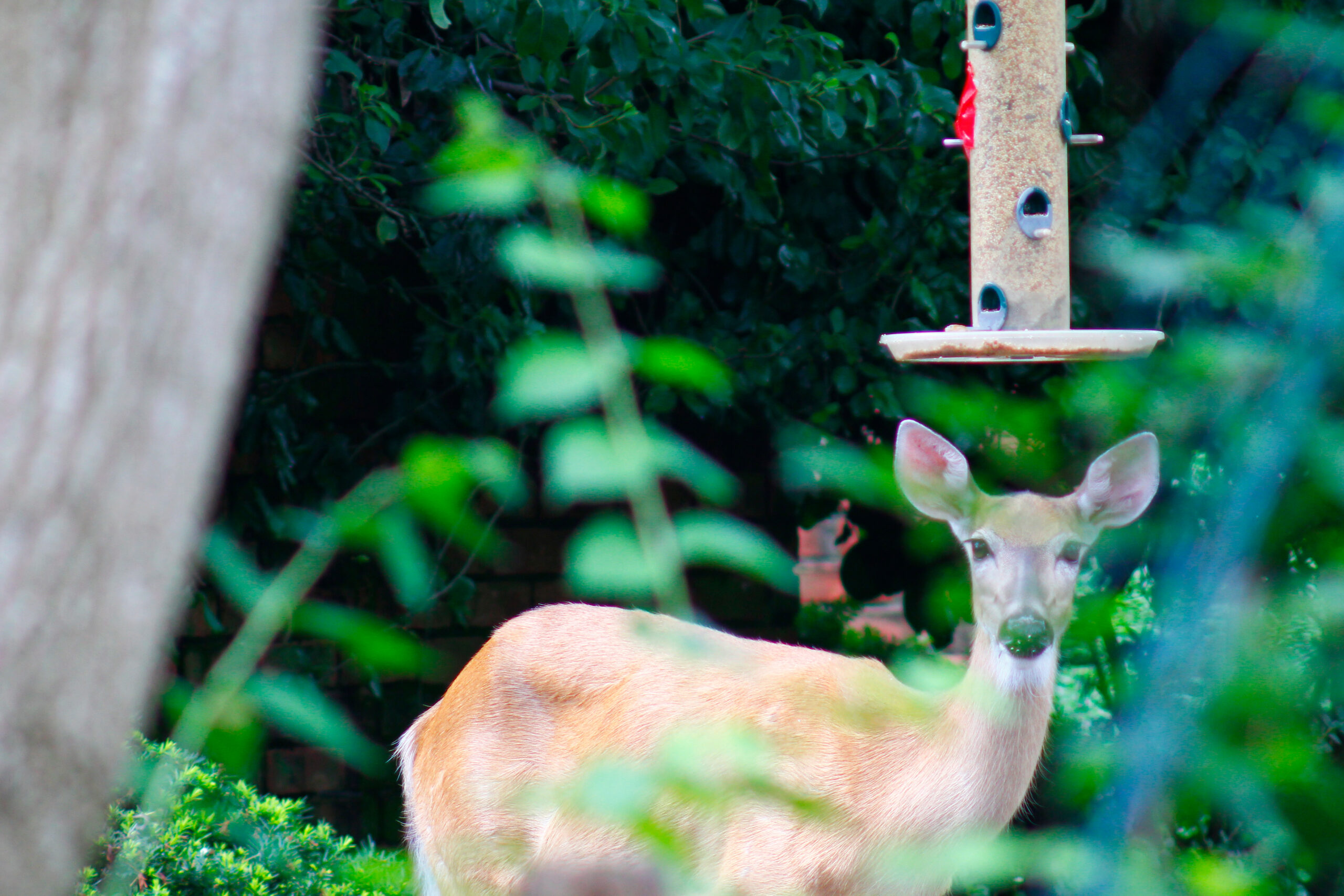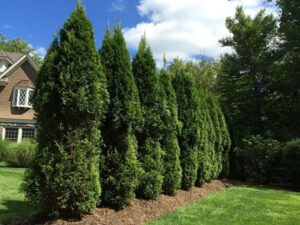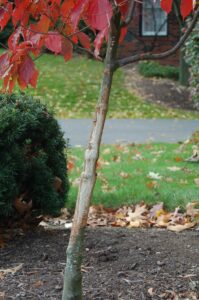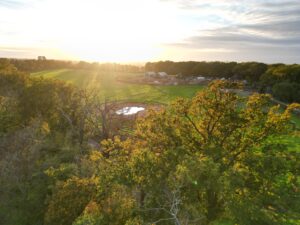Deer damage to trees and shrubs can be challenging to manage. This is especially true considering an adult deer can consume six pounds of plant material daily! You invest in valuable plantings and take time to promote their health and beauty. Unfortunately, grazing deer can quickly dash your hard work. New plantings and young trees are particularly at risk.
The best approach to deer management relies on a combination of methods for maximum effectiveness. Repellents, fencing and deer resistant plants are all important elements to prevent deer from making your yard their personal buffet.

Fewer Deer Means Fewer Ticks
Beyond causing damage to trees and shrubs, deer also are known carriers of ticks. A single deer can introduce 450,000 larval ticks a year into its territory. So, chances are that if deer are on your property then ticks are too. That means a greater risk of tick-borne illnesses including Lyme disease. With this, it’s important to understand that managing deer on your property is also a facet of tick management as well. To find out more about tick safety, check out the University of Rhode Island Tick Encounter website and their everyday practices that promote TickSafe living.
Fencing to Impede Deer Feeding
Fences, netting or barriers can effectively exclude deer. This is especially important for high value plantings near large deer populations. Further, it is a great way to help protect newly planted trees and deter deer browsing.

For fencing, leave your tree enough room to grow so that the branches won’t become entangled with the fence. Fencing can go as high and wide as you like but four feet tall by several feet wide is usually enough to at least limit the amount of area that a deer can reach. Be sure to use a stout gauge that will hold its shape but that is also pliable enough to work with. Any fencing should be in close contact with the soil. Deer prefer to go under loosely grounded fences, rather than over them.

Beyond feeding, male deer can inflict additional damage to trees and shrubs in the fall as they scrape up against tree trunks to rub the velvet off of their antlers resulting in loss of bark. They do this to mark their territory. The result can be dead or deformed trees. Fencing can be useful during buck season as well to prevent buck rub.
Once a tree has established a nice set of lower branches, bucks will be less likely to bother it. Also, after a trunk gets to be a few inches in diameter, the tree can better withstand buck rub.
Effective Treatments to Minimize Deer Damage
There are lots of home and store-bought remedies to deter deer. Some are more effective than others. Most won’t last more than a few days. Professional repellent treatments are the most effective for suppression of deer browse. Standards for application, timing and proper mixing of deer repellents are all important to best safeguard your landscape from damage by deer. Depending on the time of year, the amount of deer pressure and consumer preferences, different products may be recommended.
Prevent Tree and Shrub Damage through Plant Selection
Finally, proper selection of trees and shrubs is one of the best methods to discourage deer browsing and the resulting damage it causes trees, shrubs and garden plants. Simply put, choose plants for your landscape that deer don’t like to eat. This list of deer resistant plantings is a great place to start.



